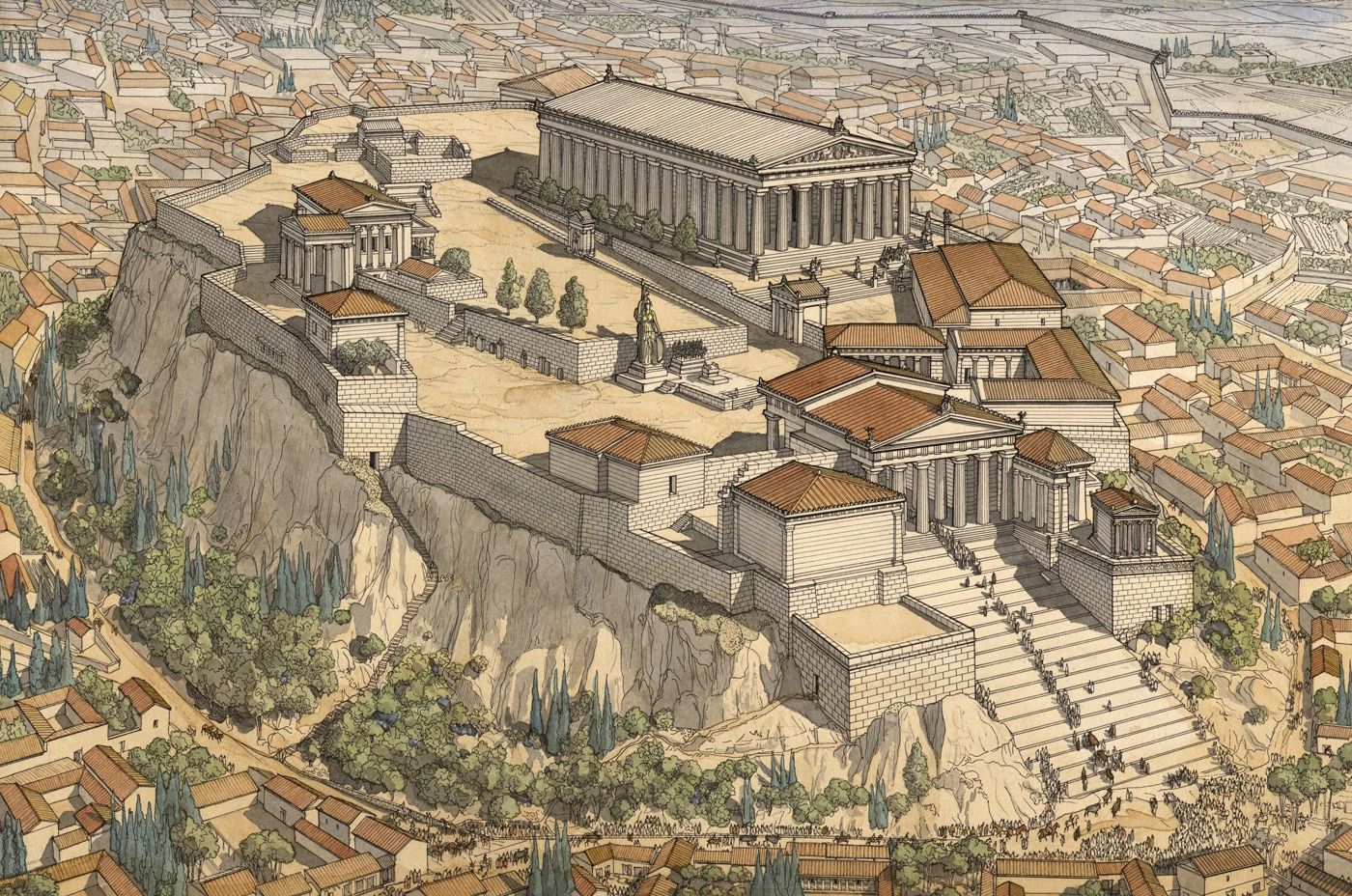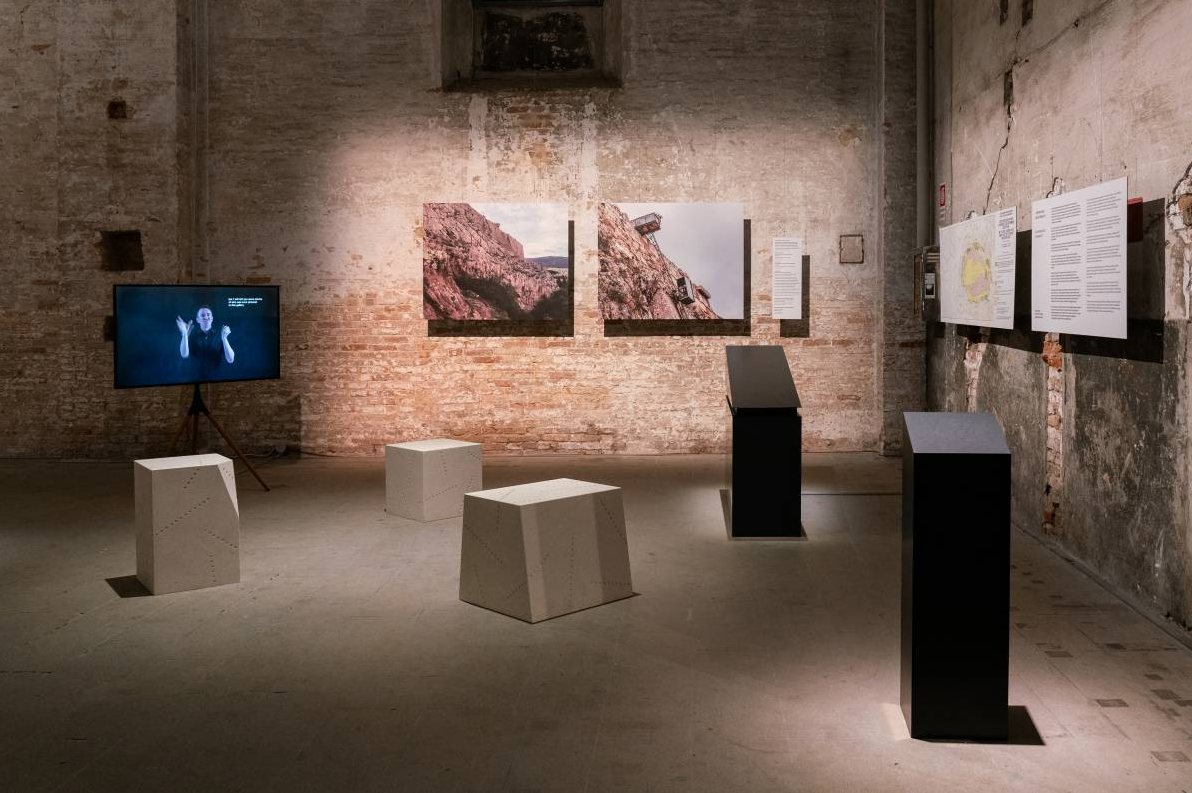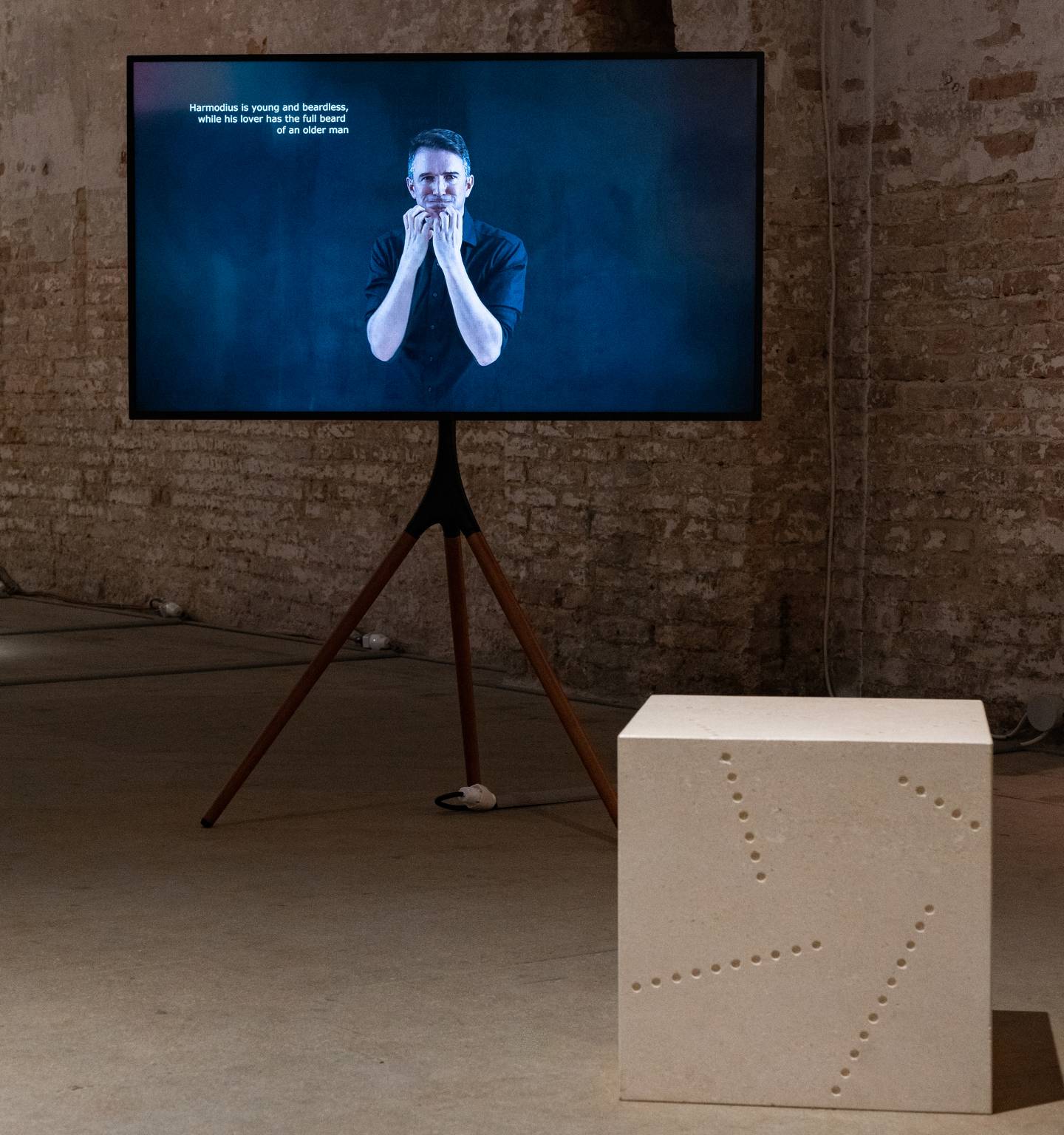创新背景
古代通往雅典卫城的道路是一条从集市市场一直延伸到帕特农神庙的坡道,人们在倾斜的道路上行进,在上坡的集体感受中根据需求得到帮助或者互相帮助。19世纪时这条道路被改造成一条狭窄的、与时俱进的小径,结合孤独与朝圣的浪漫。但失去了旅程的社区意义,残疾游客与同龄人无法一起攀登。
为了让此处在2004年奥运会上变得通达,电梯轿厢抓住垂直的岩石表面,但这个路径无法满足游客与伙伴同游的需求。
创新过程
在有人类存在的时候就会有残疾人,但在艺术和历史探索中,残疾人往往处在边缘地带被人忽略。2021年5月的威尼斯双年展上,约翰霍普金斯大学艺术史助理教授Jennifer Stager、帕森斯设计学院和新学院大学的建筑和城市历史教授David Gissen以及宾夕法尼亚大学罗马建筑助理教授Mantha Zarmakoupi将残疾人的感受纳入到艺术设计中,通过残疾的视角对雅典卫城进行历史性的重建,设计制作了名为“残疾考古学”的双年展研究站。

研究重新构想了通往雅典卫城的的古代坡道以及坡道顶部的绘画画廊和小石座,使用与残疾有关的语言和结构深入了解过去的历史和结构,想象建立者的想法。 Stager表示,这个实验的目的在于,用当代残疾者不同的语言和形式来翻译古代物品,能够挖掘更多的历史和过去。
坡道的模型是一种触摸时会轻轻振动的雕塑,让人联想到许多人一起走在坡道上时产生的轻微振动。岩石座椅的灵感来自一位古代旅行作家对原始坡道顶部的描述:“一块大到足以用作小男人座位的石头”。装置中各种形状的混凝土结构点缀着区域,并配有钻孔唤起风化岩石上的分层。

展览的重点时制作一部手语电影,用手语重现曾经在坡道顶部区域增光添彩的画面。这些画作的内容目前无法明确,但使用当时的文字和视觉比较,研究人员想象出一些与画作主题相关的场景。
一种名为ekphrasis的修辞实践在公元前2世纪时很受欢迎,它优势被用来重建绘画,生动地描述画面内容。失聪演员在电影中用美国和希腊手语来描述画作可能表达的主题和内容,一些视觉元素的使用使画作的故事和背景更有深度。

电影以音频提供另一角度的绘画表达,将手语内容尽可能将历史结合,成为一种可以用来了解历史的新文本。字幕编辑将文本放置在电影上,使电影比传统字幕在框架底部的电影更具艺术性。表演、音频、字幕和装置共同表现了残疾结构下几个世纪以前的雅典卫城。
创新关键点
创新地将残疾融入对历史的探究和艺术创造中,引导人们考虑残疾文化。
创新价值
将残疾融入对过去的看法中,连接历史保护、艺术创造和残疾人权利,让人们认识到残疾人的力量和不一样的历史艺术视角。
Imagine the historical space from the perspective of a person with disabilities
There are people with disabilities when there are human beings, but in the exploration of art and history, people with disabilities are often marginalized and ignored. At the Venice Biennale in May 2021, Jennifer Stager, assistant professor of art history at Johns Hopkins University, David Gissen, professor of architecture and urban history at Parsons School of Design and New College University, and Mantha Zarmakoupi, assistant professor of architecture at the University of Pennsylvania in Rome, incorporated the feelings of people with disabilities into their artistic designs, making historic reconstructions of the Acropolis through a disability perspective, designing and producing something called "Archaeology of Disability." Biennale Research Station.
The study reimagined the ancient ramp leading to the Acropolis and the painting gallery and small stone pedestal at the top of the ramp, using language and structure associated with disability to delve into the history and structure of the past, imagining the ideas of the founders. Stager said the aim of the experiment is to translate ancient objects in different languages and forms for contemporary people with disabilities, enabling more history and the past to be tapped into.
The model of the ramp is a sculpture that vibrates gently when touched, reminiscent of the slight vibrations that occur when many people walk together on the ramp. The rock seat was inspired by an ancient travel writer's description of the top of the original ramp: "a stone large enough to be used as a seat for a little man". Concrete structures of various shapes in the installation dot the area and are equipped with drilled holes evoking layering on weathered rock.
The exhibition focuses on the production of a sign language film that recreates the images that once added luster to the top area of the ramp. The content of the paintings is not currently clear, but using textual and visual comparisons from the time, the researchers imagined some scenes related to the subject matter of the paintings.
A rhetorical practice called ekphrasis was popular in the 2nd century BC, and its advantage was used to reconstruct paintings, vividly describing the content of the picture. Deaf actors use American and Greek sign language in the film to describe the subject matter and content that the painting may express, and the use of some visual elements gives the painting's story and background more depth.
The film provides another angle of pictorial expression with audio, combining the sign language content as much as possible with history, becoming a new text that can be used to understand history. Subtitle editing places text on top of the film, making the film more artistic than a film with traditional subtitles at the bottom of the frame. The performances, audio, subtitles and installations together represent the Acropolis centuries before the disabled structure.
智能推荐
艺术学创新思维 | 文艺复兴时期的城市形态创新(1)
2022-09-05罗马提供了比其他任何城市更广泛的城市形态,从校园广场的蜿蜒主干道,到文艺复兴时期的笔直街道,再到法尔内斯广场(Piazza Farnese)、巴贝里尼广场(Piazza Barberini)、特莱维广场(Fontana di Trevi)和纳沃纳广场(Piazza Navona)等王朝建筑的宽敞和辉煌。文艺复兴和巴洛克罗马塑造了这些空间和艺术愿景,赋予他们时代意义和才华。 约瑟夫·康纳斯博士是文艺复兴和巴洛克时期的著名作家和学者,哈佛大学艺术史和建筑史教授。他曾在牛津大学、芝加哥大学和哥伦比亚大学任职,在那里,他富有感染力和洞察力的演讲为他赢得了总统奖。康纳斯博士的另一个特点是,他是唯一一位同时领导两大研究机构——罗马美国研究院和位于佛罗伦萨的哈佛大学意大利文艺复兴研究中心的人。
涉及学科涉及领域研究方向艺术学创新思维 | 文艺复兴时期的城市形态创新(4)
2022-09-05罗马提供了比其他任何城市更广泛的城市形态,从校园广场的蜿蜒主干道,到文艺复兴时期的笔直街道,再到法尔内斯广场(Piazza Farnese)、巴贝里尼广场(Piazza Barberini)、特莱维广场(Fontana di Trevi)和纳沃纳广场(Piazza Navona)等王朝建筑的宽敞和辉煌。文艺复兴和巴洛克罗马塑造了这些空间和艺术愿景,赋予他们时代意义和才华。 约瑟夫·康纳斯博士是文艺复兴和巴洛克时期的著名作家和学者,哈佛大学艺术史和建筑史教授。他曾在牛津大学、芝加哥大学和哥伦比亚大学任职,在那里,他富有感染力和洞察力的演讲为他赢得了总统奖。康纳斯博士的另一个特点是,他是唯一一位同时领导两大研究机构——罗马美国研究院和位于佛罗伦萨的哈佛大学意大利文艺复兴研究中心的人。
涉及学科涉及领域研究方向音乐学创新思维 | 音乐与多重感知的相互作用
2022-07-28从不同的模式研究音乐和人的感官之间的相互作用,发现音乐与多重感知之间的联系。
涉及学科涉及领域研究方向